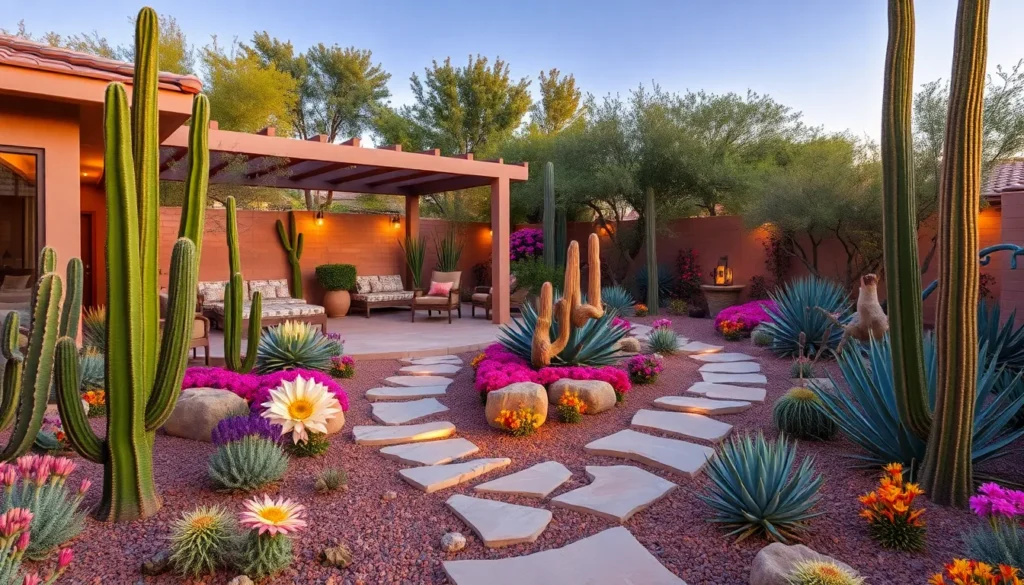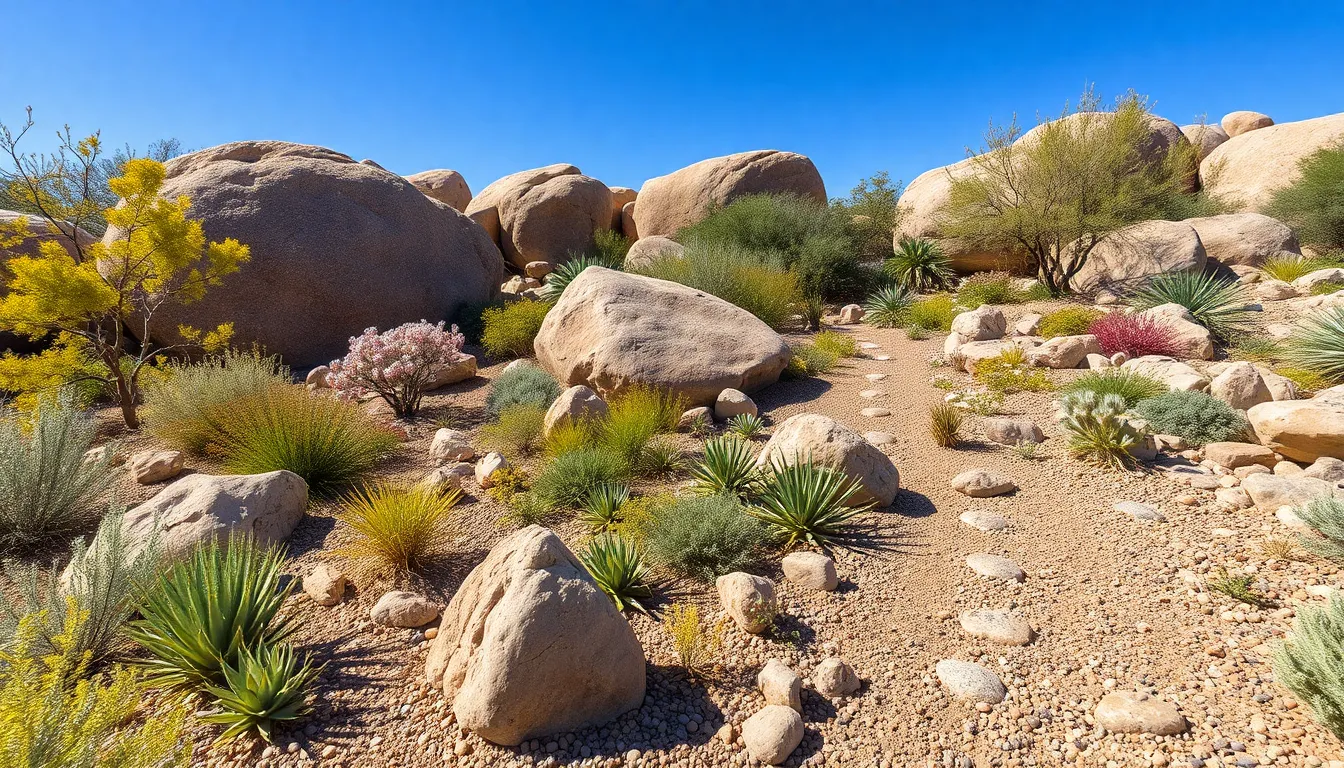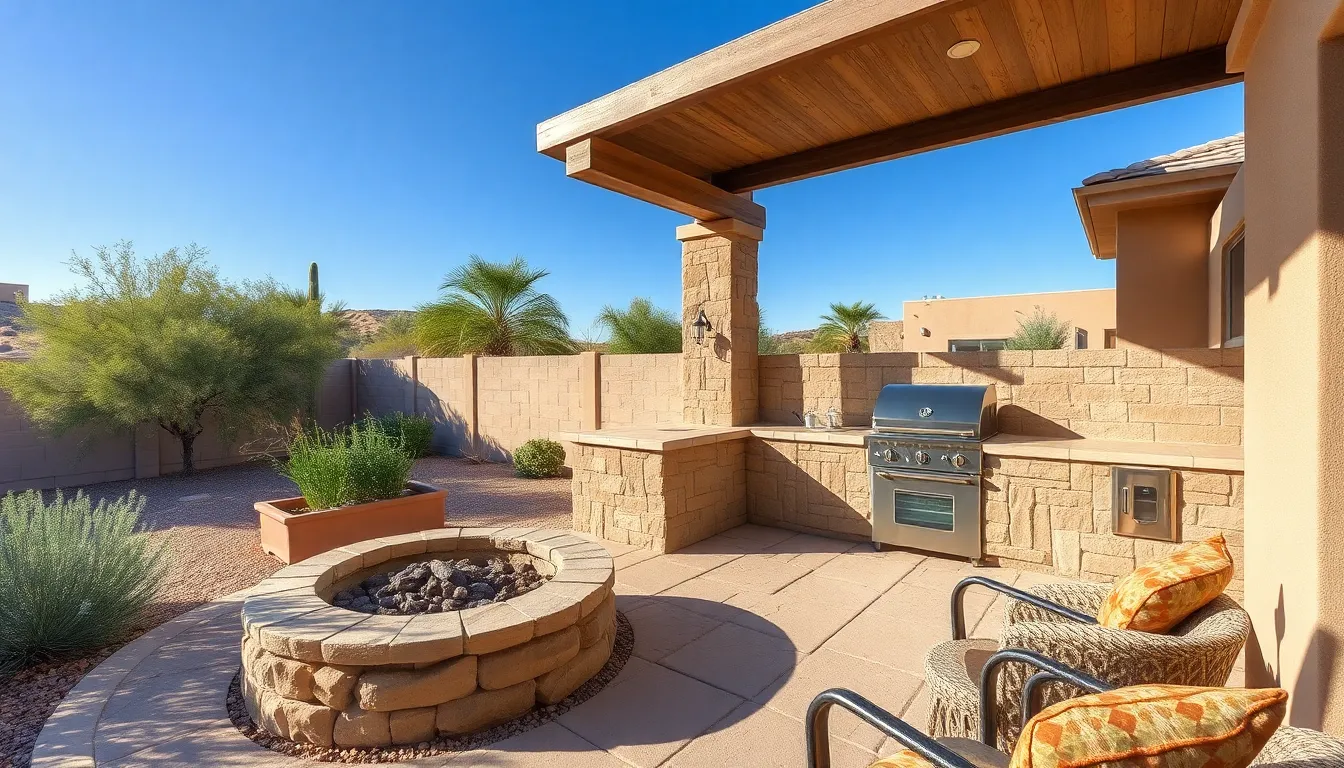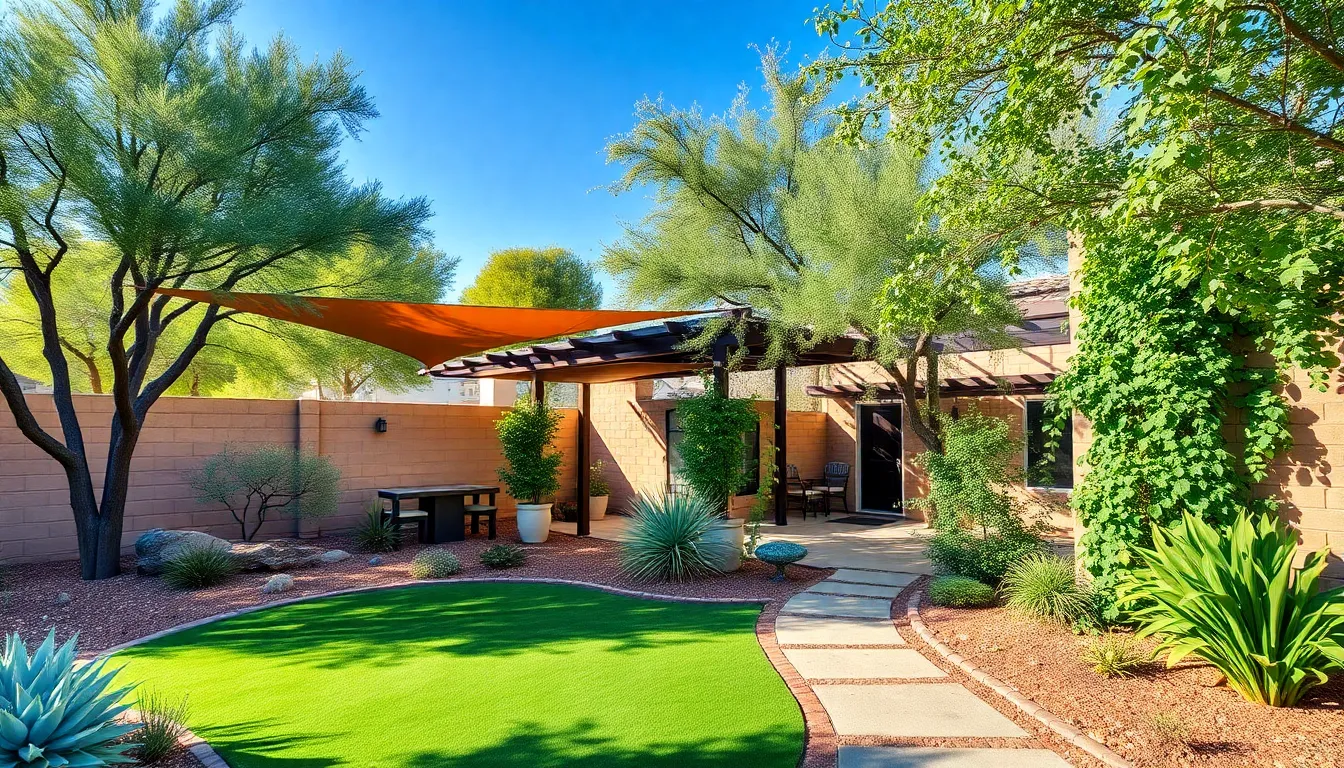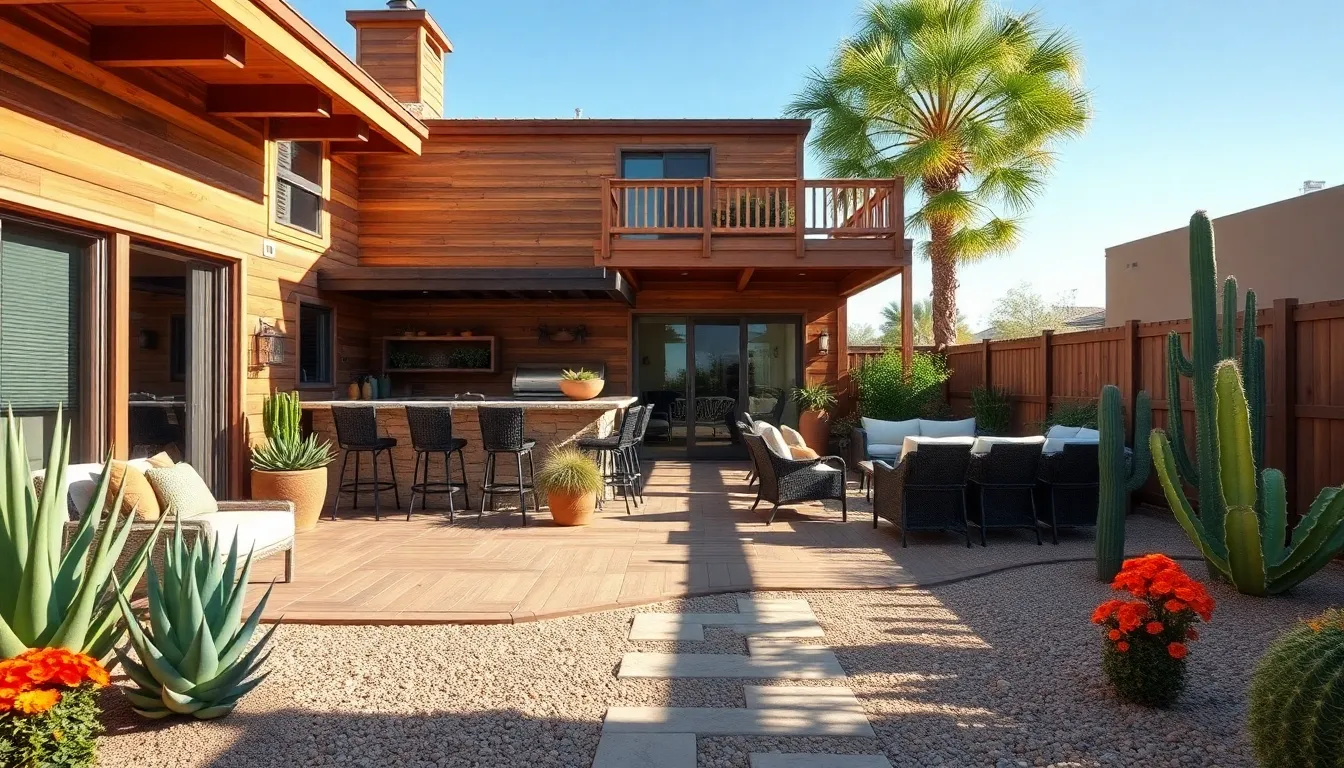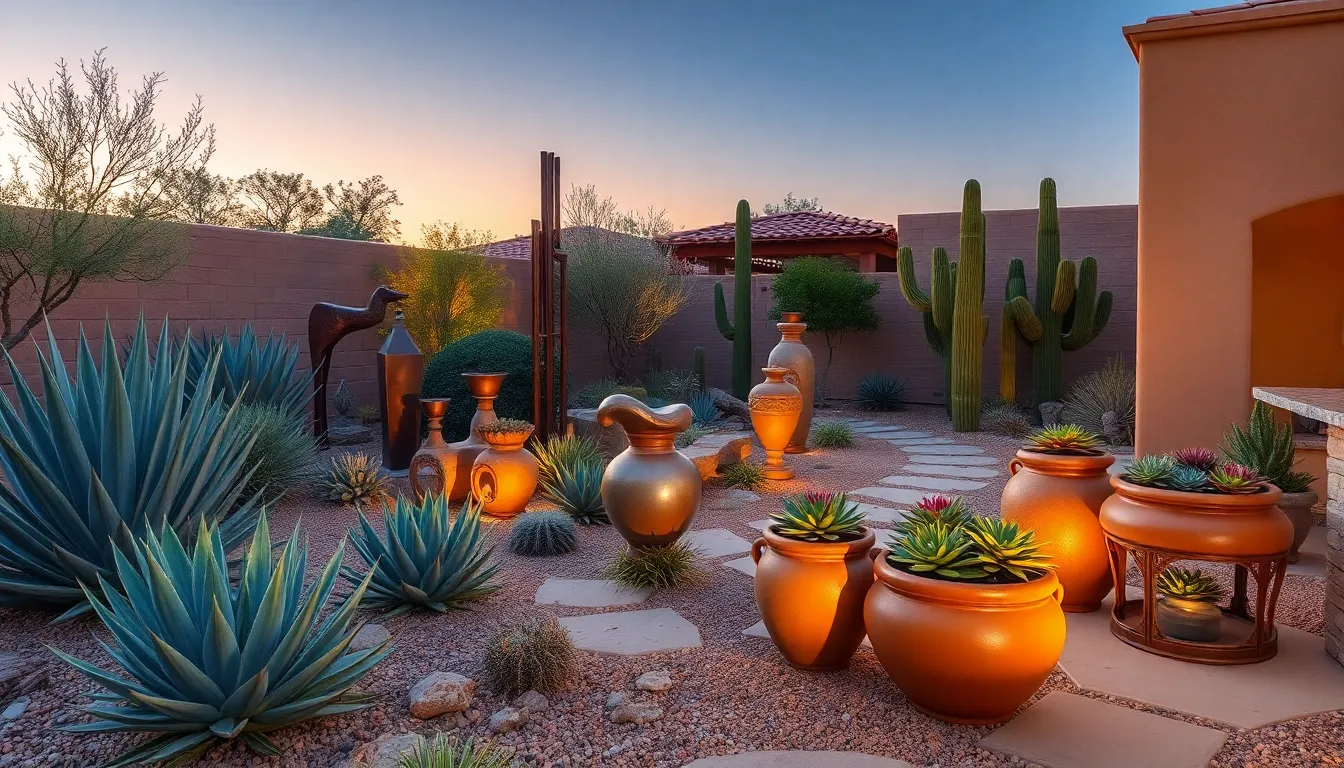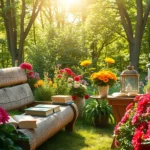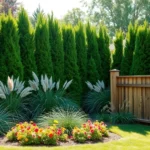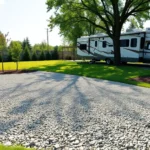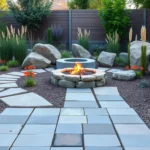Living in Arizona doesn’t mean you have to sacrifice stunning outdoor spaces. We’ve discovered that desert backyards offer unique opportunities to create breathtaking landscapes that thrive in the Southwest’s challenging climate while conserving precious water resources.
Desert landscaping has evolved far beyond basic gravel and cacti. Today’s Arizona homeowners are transforming their outdoor spaces into sophisticated retreats that celebrate the natural beauty of the Sonoran Desert. From vibrant native plant gardens to sleek modern fire features we’re seeing innovative designs that work harmoniously with the desert environment.
Whether you’re dealing with scorching summers limited water access or rocky terrain we’ll show you how to turn these challenges into design advantages. Our proven desert backyard ideas will help you create an outdoor oasis that’s both beautiful and sustainable while reducing maintenance costs and increasing your property value.
Embrace Native Desert Plants for Low-Maintenance Landscaping
Native desert plants transform Arizona backyards into sustainable landscapes that thrive naturally in our harsh climate. These hardy specimens require minimal water and maintenance while delivering stunning visual impact year round.
Choose Drought-Resistant Succulents and Cacti
Prickly pear cacti create dramatic focal points with their distinctive paddle shaped segments and vibrant yellow blooms. We recommend planting barrel cacti like the golden barrel (Echinocactus grusonii) and fishhook barrel (Ferocactus wislizeni) for striking architectural elements that store water efficiently. Agave plants such as century plant and Arizona agave provide sculptural beauty with their rosette formations and spectacular flowering displays.
Ocotillo plants add vertical interest with their spindly branches that burst into bright red flowers during spring rains. Ghost plant succulents (Graptopetalum paraguayense) spread naturally to create living ground cover that changes color with seasonal temperature shifts. Desert spoon plants offer year round structure with their symmetrical leaf arrangements and towering flower stalks.
Incorporate Arizona’s Indigenous Trees and Shrubs
Palo verde trees serve as Arizona’s state tree and provide filtered shade with their green bark and delicate foliage. We suggest planting desert willow trees for their orchid like flowers and graceful weeping form that attracts hummingbirds throughout the growing season. Mesquite trees develop extensive root systems that tap into deep groundwater while producing edible pods and dense shade.
Brittlebush shrubs create golden carpets of daisy like flowers from fall through spring. Chuparosa plants bloom almost continuously with tubular red flowers that serve as hummingbird magnets. Desert marigold shrubs produce cheerful yellow blooms nearly year round and self seed to expand naturally throughout your industry.
Create Colorful Desert Wildflower Gardens
Desert lupine produces tall spikes of purple blue flowers that attract butterflies and beneficial insects during spring bloom cycles. We plant desert marigolds in masses for continuous golden color that persists through multiple seasons with minimal supplemental watering. Ghost flower (Desert willow) creates ethereal displays with white to pale pink blooms that appear after summer monsoons.
Fairy duster shrubs offer delicate pink powder puff flowers that bloom from late winter through early summer. Desert zinnia plants self seed readily and produce small bright flowers in yellow orange and red tones. Globemallow creates patches of orange cup shaped flowers that bloom repeatedly throughout the year with occasional deep watering.
Design Stunning Desert Rock Gardens and Xeriscaping
Rock gardens and xeriscaping create the perfect foundation for Arizona desert backyards. We’ll show you how to combine drought-tolerant plants with strategic hardscaping for stunning results.
Use Local River Rock and Decomposed Granite
Local river rock provides smooth texture and natural drainage that works perfectly in Arizona’s arid climate. We recommend using river rocks as ground cover around native plants like palo verde and desert willow to create visual contrast while conserving moisture. Decomposed granite offers an excellent pathway material that compacts well and blends seamlessly with the desert environment.
Grouping plants closely together over decomposed granite helps shade the soil and minimize water evaporation. We’ve found that this combination reduces water needs significantly compared to traditional grass or mulch. River rocks also provide the clean, polished look that complements modern desert landscaping while requiring minimal maintenance.
Build Striking Boulder Arrangements
Boulder arrangements serve as natural focal points that add height and dramatic visual interest to flat desert terrain. We suggest combining boulders of various sizes to mimic natural rock outcroppings found throughout Arizona’s industry. Large boulders can define seating areas or create natural barriers between different garden zones.
Placing boulders strategically around native plants like cacti and succulents enhances the authentic desert aesthetic. We recommend positioning smaller rocks around larger boulders to create layered compositions that look naturally weathered. Boulder groupings also provide microclimates where desert plants can thrive in slightly cooler conditions.
Create Defined Pathways with Desert Stones
Desert stone pathways guide movement through your backyard while connecting different areas both functionally and beautifully. We prefer using locally sourced stones or decomposed granite that can handle Arizona’s extreme heat without becoming uncomfortable to walk on. Defined pathways help organize your industry design and create clear circulation patterns.
Stone pathways work especially well when lined with native wildflowers like coral plant, Mexican gold poppies, and desert mallow for vibrant seasonal color. We’ve discovered that incorporating these pathway elements creates cohesive industry design that feels both practical and visually striking in desert conditions.
Install Water-Wise Outdoor Living Spaces
Arizona’s desert environment demands strategic outdoor living spaces that prioritize water conservation while maximizing comfort and functionality.
Build Covered Patios and Ramadas for Shade
Covered patios serve as essential refuges from Arizona’s intense sun, allowing us to enjoy outdoor spaces even during peak heat hours. We recommend constructing ramadas using natural materials like cedar or mesquite wood that complement the desert’s earthy color palette. These traditional southwestern structures can reduce ambient temperatures by up to 15 degrees compared to uncovered areas.
Stone pillars and vigas create authentic desert architecture while providing structural support for shade coverings. Materials like flagstone and desert granite offer durability against extreme temperature fluctuations. Positioning these covered areas on the north or east sides of our homes maximizes natural cooling during afternoon hours.
Retractable shade sails add flexible coverage options for seasonal adjustments and varying sun angles throughout the year. We can install multiple sail points to create layered shade zones that protect different activity areas. Heat resistant fabrics withstand UV exposure while reducing cooling costs by blocking direct sunlight from windows and doors.
Design Fire Pit Areas with Desert Materials
Fire pits become natural gathering spots that extend outdoor living well into Arizona’s comfortable evening hours. We recommend using local flagstone or desert river rock to construct fire rings that blend seamlessly with existing hardscape elements. These materials retain heat efficiently while withstanding temperature extremes without cracking.
Seating arrangements using boulder groupings create organic conversation areas around fire features. Natural stone benches or built in seating walls using the same materials as the fire pit establish visual continuity. We can incorporate weather resistant cushions in desert tones for added comfort during extended gatherings.
Safety clearances require 10 feet minimum from structures and overhanging branches to prevent fire hazards. Gravel or decomposed granite surrounding fire areas creates spark resistant zones while maintaining the desert aesthetic. Installing wind screens using tempered glass or metal panels protects flames from Arizona’s occasional gusty conditions.
Create Outdoor Kitchens Using Heat Resistant Materials
Outdoor kitchens designed for desert climates must withstand extreme temperature swings and intense UV exposure throughout the year. We prioritize materials like natural stone countertops, stainless steel appliances, and powder coated steel cabinetry that resist fading and thermal expansion. These surfaces maintain functionality even when temperatures exceed 115 degrees Fahrenheit.
Strategic placement under ramadas or pergolas protects cooking equipment and creates comfortable prep zones during hot summer months. Incorporating built in refrigeration, sinks, and storage within covered areas extends usability year round. We recommend installing misting systems around outdoor kitchens to reduce ambient temperatures by 20 to 30 degrees during peak heat.
Natural stone backsplashes and countertops using locally sourced materials like Sedona sandstone or desert granite create cohesive design elements. These surfaces require minimal maintenance while providing heat resistance for cooking appliances. Built in planters with heat tolerant herbs like rosemary and oregano add functional landscaping elements that thrive in kitchen microclimates.
Incorporate Dramatic Desert Water Features
Water features transform Arizona desert backyards from simple hardscaped areas into captivating oases that celebrate the contrast between moisture and arid landscapes. We’ll explore how strategic water elements enhance both the visual appeal and ambiance of your outdoor space while respecting the desert environment.
Install Solar-Powered Desert Fountains
Solar-powered fountains harness Arizona’s abundant sunshine to create sustainable water features that operate without increasing your electricity costs. These eco-friendly installations range from compact tabletop models perfect for patio corners to large statement pieces that serve as garden centerpieces.
Position your solar fountain where it receives at least 6-8 hours of direct sunlight daily for optimal performance. The consistent Arizona sun ensures reliable operation throughout most of the year, making these features particularly well-suited to our climate.
Choose fountain designs that complement your desert industry by selecting materials like weathered copper, natural stone, or concrete that echo the surrounding environment. Many solar fountains include battery backup systems that allow water circulation during evening hours when you’re most likely to enjoy your outdoor space.
We recommend placing smaller solar fountains near seating areas where the gentle sound of flowing water creates a peaceful ambiance during hot afternoons. Larger installations work beautifully as focal points in xeriscaped garden beds surrounded by drought-tolerant plants like agave and prickly pear.
Design Modern Water Walls with Natural Stone
Water walls using locally sourced natural stone create stunning vertical features that blend modern design with desert aesthetics. These installations provide the soothing sound of cascading water while serving as living art pieces that enhance your backyard’s visual impact.
Select stone materials that reflect Arizona’s natural palette, such as flagstone, travertine, or desert sandstone that complement your existing hardscape elements. The water gently flowing down these textured surfaces catches and reflects sunlight throughout the day, creating ever-changing visual interest.
Design your water wall to incorporate surrounding desert plants by creating planting pockets or positioning it near established succulent gardens. This integration helps the feature feel like a natural part of the industry rather than an imposed element.
Consider the cooling effect these walls provide as water evaporation subtly reduces ambient temperatures in nearby seating areas. Position water walls strategically to maximize this benefit while ensuring proper drainage and water circulation systems.
We suggest incorporating LED lighting systems that illuminate the water wall during evening hours, creating dramatic shadows and highlighting the stone’s natural textures for extended enjoyment of your outdoor space.
Create Shallow Reflecting Pools for Visual Interest
Shallow reflecting pools mirror the expansive Arizona sky and surrounding desert plants while adding depth and tranquility to your backyard design. These features work particularly well near patios or seating areas where their reflective qualities can be fully appreciated.
Keep pool depths between 6-12 inches to minimize water evaporation in our arid climate while maintaining the reflective properties that make these features so captivating. Use dark-colored liners or natural stone bottoms that enhance reflections and complement desert color schemes.
Frame your reflecting pool with drought-tolerant plants like yucca, barrel cacti, or desert marigolds that create beautiful reflected images while requiring minimal water maintenance. These plantings also help define the pool’s edges and integrate it naturally into your industry design.
Position reflecting pools to capture views of interesting architectural elements, specimen plants, or distant mountain vistas that become part of the reflected composition. Morning and evening light create particularly stunning reflective displays that change throughout the day.
We recommend incorporating subtle water circulation systems that prevent stagnation while maintaining the pool’s mirror-like surface. Simple fountains or gentle bubblers add movement without disrupting the primary reflective function.
Maximize Shade with Strategic Desert Landscaping
Creating comfortable outdoor spaces in Arizona’s intense heat requires strategic shade planning that works with the desert’s natural characteristics. We’ll explore three proven methods to transform your backyard into a cool retreat that embraces xeriscaping principles.
Plant Fast-Growing Desert Trees for Natural Cooling
Native shade trees like palo verde, desert willow, and mesquite provide the most effective natural cooling solution for Arizona backyards. These fast-growing species thrive in arid conditions while creating substantial shade canopies that reduce ambient temperatures by up to 15 degrees. Planting trees closely together around patios and seating areas maximizes soil shading and reduces water evaporation from the ground.
Desert willows grow particularly quickly and produce beautiful tubular flowers that attract hummingbirds. Mesquite trees offer dense shade and develop extensive root systems that help them survive with minimal irrigation. Arizona cypress trees create year-round privacy screens while providing excellent windbreaks against desert storms.
Strategic placement near south-facing walls helps these trees block the most intense afternoon sun. Grouping multiple trees together creates larger shaded zones and establishes microclimates that support other desert plants in your industry design.
Install Shade Sails and Pergolas
Shade sails offer flexible coverage answers that complement natural tree shade in desert backyards. These triangular or rectangular fabric canopies block harmful UV rays while allowing cooling breezes to flow underneath. Installing multiple sails at different heights creates ever-changing visual interest and extends usable outdoor space during peak heat hours.
Pergolas constructed from weather-resistant materials like cedar or powder-coated steel provide permanent shade structures that define outdoor rooms. Metal pergolas withstand Arizona’s extreme temperature fluctuations better than wood alternatives. Adding retractable canopies to pergola frames gives you seasonal flexibility for sun exposure control.
Combining pergolas with shade sails creates layered protection that reduces surface temperatures on patios and decking. Positioning these structures to shade outdoor kitchens and dining areas makes them usable throughout Arizona’s long summer months.
Design Living Walls with Climbing Desert Vines
Vertical gardens using desert-adapted climbing vines maximize shade coverage without consuming valuable ground space in compact backyards. Training vines on trellises attached to pergolas or fence lines creates natural green walls that cool surrounding air through transpiration. These living barriers provide privacy screening while softening harsh desert hardscaping elements.
Queen’s wreath and desert broom vine adapt well to Arizona’s climate and produce seasonal blooms that add color to vertical surfaces. Grape vines thrive in desert conditions and offer the bonus of edible fruit production. Morning glory varieties provide rapid coverage and vibrant flowers that open in cooler dawn hours.
Installing drip irrigation systems along vine planting areas ensures efficient water delivery to root zones. Positioning living walls on east and west-facing exposures blocks intense morning and afternoon sun while creating cooler microclimates for outdoor seating areas.
Create Functional Desert Entertainment Areas
We’ll transform your Arizona backyard into the ultimate desert entertainment destination by focusing on three key elements that maximize both function and style.
Build Multi-Level Deck Spaces
Multi-level decks maximize your outdoor space while creating distinct zones for different activities. We recommend building elevated platforms that provide natural shade underneath, perfect for storage or additional seating areas during Phoenix’s intense summer months.
Design separate levels for exact purposes like dining, lounging, or even sports courts that many Phoenix homeowners incorporate. Elevated decks work exceptionally well in desert landscapes because they create visual interest while efficiently using available space.
Choose materials that withstand extreme sun exposure such as composite decking or treated hardwoods rated for desert climates. These materials resist warping, fading, and cracking even though Arizona’s temperature fluctuations.
Incorporate raised planting beds directly into deck design to showcase drought-tolerant plants like agave and yucca at eye level. This approach increases both sunlight exposure for plants and visual appeal for guests.
Design Desert-Themed Outdoor Bars
Natural stone and stucco finishes create authentic southwestern style that complements Arizona’s desert industry. We suggest using local flagstone or travertine for bar tops, which stay cooler than dark materials and resist heat damage.
Integrate rustic wood accents through bar stools, shelving, or decorative elements that echo the desert’s natural textures. Cedar and mesquite woods perform well in dry climates and develop beautiful patina over time.
Position desert plants strategically around your bar area using potted specimens like barrel cacti, prickly pear, and desert marigolds for easy maintenance and seasonal rotation.
Install pergolas or fabric canopies overhead to provide essential shade relief during entertaining hours. Climbing desert vines like desert willow or bougainvillea can eventually cover pergola structures for natural cooling.
Install Weather-Resistant Seating Areas
Metal, treated wood, or all-weather wicker furniture performs best in Arizona’s harsh conditions, resisting sun damage and occasional monsoon rains. We recommend powder-coated aluminum frames that won’t rust or deteriorate.
Select fade-resistant, quick-drying cushions specifically rated for outdoor use in desert climates. Solution-dyed acrylic fabrics maintain color integrity even under intense UV exposure.
Position seating in naturally shaded areas or create shade using overhead fans and misting systems for maximum comfort. Strategic placement near existing structures or mature trees reduces cooling costs.
Choose earthy tones and natural textures that complement the desert environment while hiding dust and dirt common in Arizona backyards. Terracotta, sage green, and warm sand colors work particularly well.
Define seating areas using gravel pathways and stone pavers that create clear boundaries while requiring minimal maintenance. These hardscape elements also help prevent erosion during monsoon seasons.
Add Artistic Desert Elements and Lighting
Transform your desert backyard into a sophisticated outdoor sanctuary by incorporating carefully selected artistic elements and strategic lighting design. We’ll explore three essential components that elevate your Arizona industry from ordinary to extraordinary.
Incorporate Southwestern Art and Sculptures
Metal and stone sculptures inspired by Native American motifs create stunning focal points throughout your desert industry. These artistic pieces bring cultural identity and regional authenticity to your backyard while serving as conversation starters for guests. Position larger sculptures within garden beds surrounded by drought-tolerant plants like agave and prickly pear to create natural viewing areas.
Stone artwork featuring desert wildlife, geometric patterns, or abstract forms complements the rugged beauty of Arizona’s natural environment. Choose pieces crafted from local materials such as sandstone or copper that weather beautifully in desert conditions. Place sculptures strategically in courtyard areas where they can be appreciated from multiple angles and create visual interest amid your xeriscaping design.
Consider commissioning local artists to create custom pieces that reflect your personal style while honoring the Southwestern aesthetic. Weather-resistant materials like corten steel, bronze, and carved stone ensure your artistic investments withstand extreme temperatures and seasonal weather changes.
Install Dramatic LED Industry Lighting
Layered LED lighting transforms your desert backyard into an enchanting evening retreat while improving safety and security. Accent lighting positioned at the base of cacti, agave plants, and sculptural elements creates dramatic shadows and highlights the unique textures of desert flora. This targeted approach showcases your industry’s natural beauty after sunset.
Path lighting along walkways and garden borders guides movement through your outdoor space while reducing tripping hazards on uneven desert terrain. Solar-powered LED fixtures offer energy-efficient answers that require minimal maintenance in Arizona’s abundant sunshine. Install fixtures every 6-8 feet along pathways to ensure adequate illumination without overwhelming the natural desert ambiance.
Uplighting techniques work exceptionally well for highlighting architectural features, retaining walls, and large desert trees like palo verde or mesquite. Position fixtures 3-4 feet from target features to create optimal light distribution and avoid harsh glare. Programmable LED systems allow you to adjust brightness levels throughout the evening for different entertaining needs.
Use Desert-Themed Decorative Containers
Terra cotta and ceramic containers with rustic finishes provide perfect homes for succulent displays while adding authentic Southwestern charm to your industry design. Large planters filled with barrel cacti, agave, and colorful succulents create portable focal points that can be rearranged seasonally. Choose containers with drainage holes to prevent root rot in Arizona’s intense summer rains.
Metal containers with weathered patinas complement the industrial elements often found in contemporary desert design. Galvanized steel, copper, and corten steel planters develop beautiful natural aging that enhances their visual appeal over time. Group containers of varying heights and sizes to create ever-changing arrangements that add vertical interest to flat desert terrain.
Raised bed containers made from natural stone or stained concrete offer organized planting answers that optimize sunlight exposure for desert species. These elevated gardens improve drainage while making maintenance tasks more comfortable during Arizona’s extreme heat. Fill raised beds with well-draining soil mixes specifically formulated for cacti and succulents to ensure optimal plant health.
Conclusion
Transforming your Arizona backyard into a desert oasis doesn’t have to be overwhelming. We’ve shown you how native plants strategic hardscaping and thoughtful design elements can create stunning outdoor spaces that thrive in our unique climate.
The key lies in working with the desert rather than against it. By choosing drought-tolerant plants incorporating natural materials and designing functional entertainment areas you’ll reduce maintenance while maximizing your property’s value and appeal.
Your desert backyard has incredible potential waiting to be unlocked. Start with one element that excites you most and build from there – whether it’s a rock garden shade structure or artistic focal point. Soon you’ll have an outdoor retreat that’s both beautiful and perfectly suited to Arizona living.
Frequently Asked Questions
What are the best native plants for Arizona desert landscaping?
The best native plants for Arizona desert landscaping include drought-resistant succulents like prickly pear and barrel cacti, sculptural agave plants, and indigenous trees such as palo verde, desert willow, and mesquite. These plants thrive in harsh desert conditions while providing natural beauty, shade, and ecological benefits with minimal water requirements.
How can I create shade in my Arizona backyard without using too much water?
Create shade through strategic placement of fast-growing native trees like palo verde and mesquite, install shade sails and pergolas for flexible coverage, and design living walls with climbing desert vines. These methods provide effective cooling while maintaining water-wise landscaping principles and enhancing your outdoor space’s aesthetic appeal.
What materials work best for desert rock gardens and xeriscaping?
Local river rock and decomposed granite are ideal for ground cover and pathways in desert landscapes. Boulder arrangements create natural focal points, while desert stones define pathways and guide movement. These materials enhance moisture conservation, reduce water needs, and complement the natural desert aesthetic beautifully.
How do I design an outdoor kitchen that can handle Arizona’s extreme heat?
Use heat-resistant materials and place your outdoor kitchen under shade structures like covered patios or ramadas. Incorporate built-in refrigeration, misting systems, and ensure proper ventilation. Natural materials and strategic design placement help create functional cooking spaces that remain comfortable even in extreme desert temperatures.
What are the key elements for creating functional desert entertainment areas?
Focus on three key elements: build multi-level decks using sun-resistant materials to create distinct activity zones, design desert-themed outdoor bars with natural stone finishes, and establish weather-resistant seating areas with durable materials. Strategic placement and proper shade coverage maximize both function and comfort.
How can I incorporate artistic elements into my desert backyard design?
Incorporate Southwestern art and sculptures made from local materials to create authentic focal points. Use decorative containers for succulents that complement the desert aesthetic, and add layered LED lighting to highlight features and create evening ambiance. These elements enhance cultural authenticity while maintaining the natural desert feel.
What are the main benefits of desert landscaping in Arizona?
Desert landscaping reduces maintenance costs, enhances property value, and creates sustainable outdoor spaces. It conserves water through drought-tolerant plants, requires minimal upkeep, and provides natural beauty that complements Arizona’s climate. Additionally, it supports local ecosystems while creating comfortable outdoor living areas.
How do I design effective lighting for my desert backyard?
Use layered LED lighting to transform your space into an evening retreat. Include path lighting for safety, uplighting to highlight plants and architectural features, and accent lighting for artistic elements. Strategic placement creates ambiance while ensuring functionality and showcasing your desert landscape’s natural beauty after dark.

